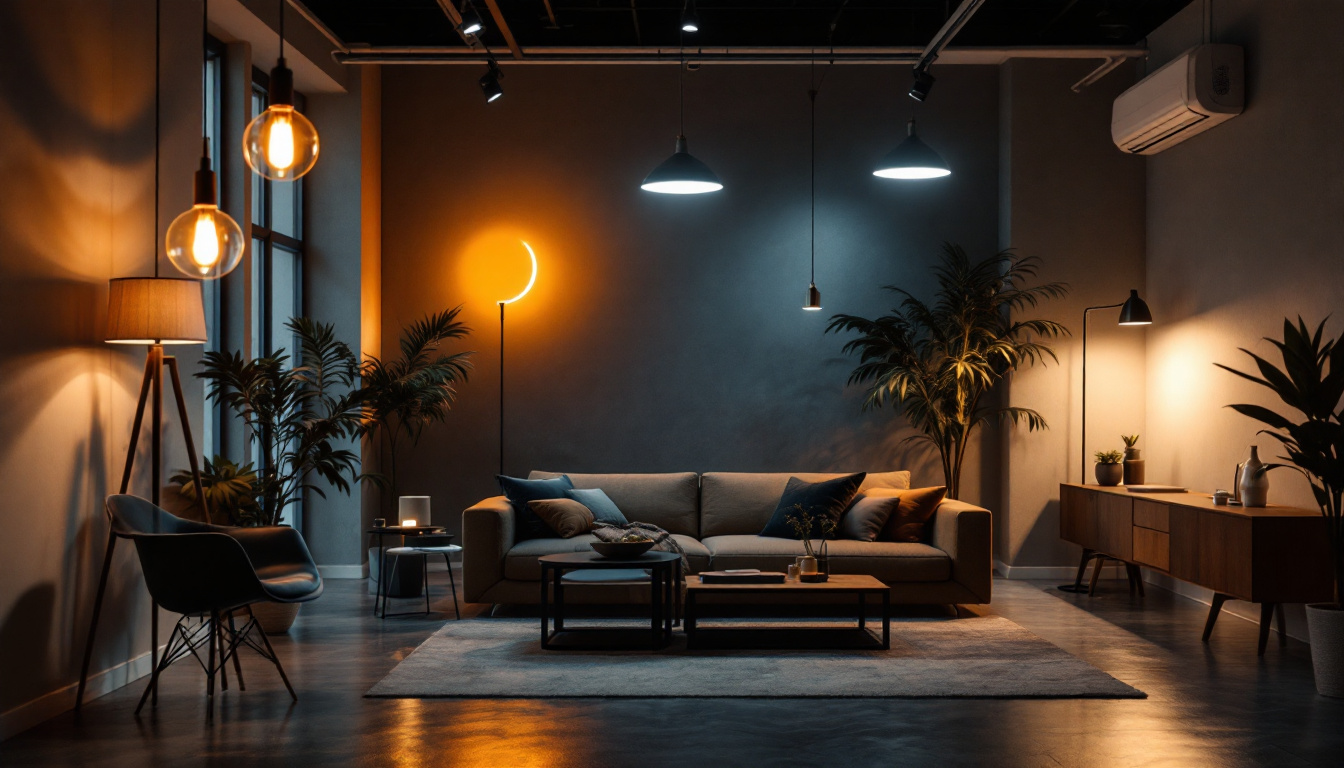
canned lighting, often referred to as recessed lighting, has become a staple in modern residential and commercial design. For lighting contractors, understanding the various options available in this category is essential for meeting client needs and enhancing overall project outcomes. This guide delves into the diverse types of canned lighting, their applications, installation considerations, and the latest trends that can elevate any lighting project.
Canned lighting fixtures are designed to be installed into a hollow opening in the ceiling, creating a clean and unobtrusive look. They are versatile and can be used for various purposes, including ambient, task, and accent lighting. This section explores the fundamental aspects of canned lighting, helping contractors grasp its significance in contemporary design.
At its core, canned lighting consists of a housing unit that is recessed into the ceiling. The light source is typically a bulb that can be easily replaced or upgraded. This type of lighting is favored for its ability to provide illumination without taking up visual space, making it ideal for rooms with low ceilings or where aesthetics are a priority. The sleek design of canned lighting fixtures allows them to blend seamlessly with the ceiling, creating a streamlined look that is both modern and sophisticated.
One of the primary advantages of canned lighting is its versatility. It can be used in various settings, from kitchens and living rooms to commercial spaces. Additionally, canned lights can be adjusted to focus on specific areas, making them perfect for highlighting artwork or architectural features. This targeted lighting capability not only enhances the visual appeal of a space but also draws attention to elements that might otherwise go unnoticed, creating a more dynamic environment.
Moreover, they can be equipped with dimmers, allowing for adjustable brightness levels that enhance the ambiance of a space. This flexibility is particularly appealing to homeowners and business owners alike, as it allows them to tailor the lighting to suit different occasions and moods. Furthermore, with advancements in LED technology, canned lighting now offers energy-efficient options that not only reduce electricity costs but also have a longer lifespan compared to traditional bulbs. This makes them an environmentally friendly choice, appealing to those looking to minimize their carbon footprint while still achieving stylish and effective lighting solutions.
In addition to their energy efficiency, canned lighting fixtures come in a variety of styles, sizes, and finishes, allowing for customization that can complement any interior design scheme. Whether you prefer a minimalist chrome finish or a more rustic bronze look, there is a canned lighting option to suit your taste. Additionally, the ability to install these fixtures in various configurations—such as in rows or clusters—provides designers with the creative freedom to craft unique lighting layouts that enhance the overall aesthetic of a room. This adaptability makes canned lighting not just a functional choice, but also a key element in the art of interior design.
There is a wide array of canned lighting fixtures available, each designed for specific applications and preferences. Understanding these options is crucial for lighting contractors aiming to provide tailored solutions to their clients. Below are some of the most common types of canned lighting fixtures.
Standard recessed lights are the most common type of canned lighting. They come in various sizes and styles, allowing for flexibility in design. These fixtures can accommodate different bulb types, including incandescent, LED, and fluorescent, making them adaptable to various lighting needs.
When selecting standard recessed lights, contractors should consider the size of the housing, the type of trim, and the bulb wattage. This ensures that the lighting not only meets the functional requirements but also aligns with the aesthetic preferences of the client.
Adjustable canned lights offer the ability to direct light where it is needed most. These fixtures are equipped with a pivoting mechanism that allows the light to be angled, making them ideal for accent lighting or highlighting specific features within a room.
For contractors, understanding the mechanics of adjustable lights is essential. Proper installation ensures that the lights can be easily repositioned without compromising the integrity of the ceiling or the fixture itself.
For areas exposed to moisture, such as bathrooms or outdoor spaces, shower and wet location canned lights are essential. These fixtures are designed to withstand humidity and water exposure, ensuring safety and longevity.
When installing these lights, it is crucial to adhere to local building codes and guidelines. Proper sealing and placement can prevent water damage and electrical hazards, making it imperative for contractors to stay informed about best practices for wet location installations.
Proper installation is key to achieving optimal performance and safety in canned lighting. This section outlines the critical factors that contractors should consider during the installation process.
Before installation, contractors must assess the ceiling type and the location of joists. Different ceiling materials, such as drywall or plaster, may require specific installation techniques. Additionally, knowing where the joists are located helps in determining the placement of the fixtures to avoid any structural issues.
Using a stud finder can aid in locating joists accurately, allowing for a seamless installation process. This step is crucial, as improper placement can lead to difficulties in securing the lights and may affect the overall aesthetic of the ceiling.
Electrical wiring is a critical aspect of canned lighting installation. Contractors must ensure that the wiring is up to code and capable of handling the electrical load of the fixtures. It is advisable to use high-quality wiring and connectors to prevent issues such as overheating or short circuits.
Additionally, incorporating dimmer switches can enhance the functionality of the lighting system. When installing dimmers, it is essential to choose compatible models that work with the specific type of bulbs being used, as not all dimmers are suitable for LED or fluorescent lights.
The trim of a canned light plays a significant role in its overall appearance. Contractors should offer clients a variety of trim options, including baffle, reflector, and adjustable trims, to match the desired aesthetic of the space.
Once the fixtures are installed, attention to detail in finishing touches can elevate the overall look. Ensuring that the trims are flush with the ceiling and that any visible wiring is neatly tucked away contributes to a polished and professional finish.
As energy efficiency becomes increasingly important, contractors must stay informed about the latest advancements in canned lighting technology. This section explores energy-efficient options and sustainable practices that can benefit both contractors and their clients.
LED canned lighting has gained popularity due to its energy efficiency and longevity. Compared to traditional incandescent bulbs, LEDs consume significantly less energy and have a much longer lifespan, making them a cost-effective choice in the long run.
Contractors should educate clients on the benefits of LED lighting, including lower energy bills and reduced environmental impact. Additionally, many LED fixtures now come with adjustable color temperatures, allowing users to customize the ambiance of their spaces.
The rise of smart home technology has also influenced the canned lighting market. Smart recessed lights can be controlled via smartphone apps or voice-activated devices, offering convenience and flexibility for users.
Integrating smart lighting solutions into projects can enhance the value of the installation. Contractors should familiarize themselves with various smart lighting systems and their compatibility with existing home automation setups to provide clients with seamless integration.
Staying updated on the latest trends in canned lighting can help contractors offer innovative solutions that resonate with clients. This section highlights some of the current trends shaping the industry.
Minimalism continues to be a dominant trend in interior design, and canned lighting fits perfectly into this aesthetic. Sleek, unobtrusive fixtures that blend seamlessly with the ceiling are highly sought after, allowing for clean lines and open spaces.
Contractors can enhance their offerings by showcasing minimalist designs that prioritize simplicity and functionality. This approach not only meets client demands but also aligns with contemporary design principles.
While traditional white trims remain popular, there is a growing demand for colored and textured finishes in canned lighting. Options such as matte black, brushed nickel, and even bold colors can add a unique touch to a space.
Offering a variety of color and finish options allows contractors to cater to diverse client preferences, ensuring that the lighting complements the overall design scheme of the project.
Another trend is the integration of canned lighting with architectural features, such as coffered ceilings or exposed beams. This approach enhances the visual interest of a space while providing effective illumination.
Contractors should consider how to strategically position canned lights to highlight these architectural elements, creating a harmonious balance between lighting and design. This not only improves functionality but also adds value to the overall project.
In conclusion, canned lighting offers a versatile and aesthetically pleasing solution for various lighting needs. For lighting contractors, understanding the different types of fixtures, installation considerations, energy-efficient options, and current trends is essential for delivering exceptional results.
By staying informed and adapting to client preferences, contractors can elevate their projects and enhance customer satisfaction. As the demand for innovative lighting solutions continues to grow, embracing the potential of canned lighting will undoubtedly position contractors for success in the ever-evolving lighting industry.
Ready to take your lighting projects to the next level? At LumenWholesale, we provide lighting contractors with an exceptional range of high-quality, spec-grade canned lighting options at unbeatable wholesale prices. Say goodbye to local distributor markups and hello to superior products that meet the highest industry standards. With our hassle-free bulk buying and free shipping, you can trust that you’re getting premium lighting at the best value — every time. Elevate your lighting game and discover the best in wholesale lighting today, only at LumenWholesale.

Discover why purchasing high bay occupancy sensors in bulk from local distributors might not be the best choice.

Discover the top strategies lighting contractors use to select and install light socket covers for enhanced safety and aesthetics.

Discover innovative strategies to boost profitability in lighting installations with Color Led.

Explore how LED mirrors are revolutionizing modern lighting solutions with their energy efficiency, sleek designs, and multifunctional features.